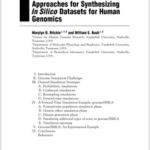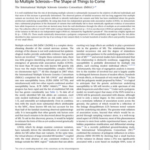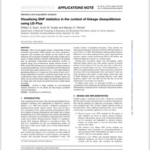Ritchie MD, Bush WS,. Simulated data is a necessary first step in the evaluation of new analytic methods because in simulated data the true effects are known. To successfully develop novel statistical and computational methods for genetic analysis, it is vital to simulate datasets consisting of single nucleotide polymorphisms (SNPs) spread throughout the genome at […]
Tag Archives: Polymorphism, Single Nucleotide
Evidence for polygenic susceptibility to multiple sclerosis–the shape of things to come.
It is well established that the risk of developing multiple sclerosis is substantially increased in the relatives of affected individuals and that most of this increase is genetically determined. The observed pattern of familial recurrence risk has long suggested that multiple variants are involved, but it has proven difficult to identify individual risk variants and […]
Evidence for polygenic susceptibility to multiple sclerosis–the shape of things to come.
, Bush WS, Sawcer SJ, de Jager PL, Oksenberg JR, McCauley JL, Pericak-Vance MA, Haines JL,. It is well established that the risk of developing multiple sclerosis is substantially increased in the relatives of affected individuals and that most of this increase is genetically determined. The observed pattern of familial recurrence risk has long suggested […]
Visualizing SNP statistics in the context of linkage disequilibrium using LD-Plus.
Often in human genetic analysis, multiple tables of single nucleotide polymorphism (SNP) statistics are shown alongside a Haploview style correlation plot. Readers are then asked to make inferences that incorporate knowledge across these multiple sets of results. To better facilitate a collective understanding of all available data, we developed a Ruby-based web application, LD-Plus, to […]
Visualizing SNP statistics in the context of linkage disequilibrium using LD-Plus.
Bush WS, Dudek SM, Ritchie MD,. Often in human genetic analysis, multiple tables of single nucleotide polymorphism (SNP) statistics are shown alongside a Haploview style correlation plot. Readers are then asked to make inferences that incorporate knowledge across these multiple sets of results. To better facilitate a collective understanding of all available data, we developed […]





